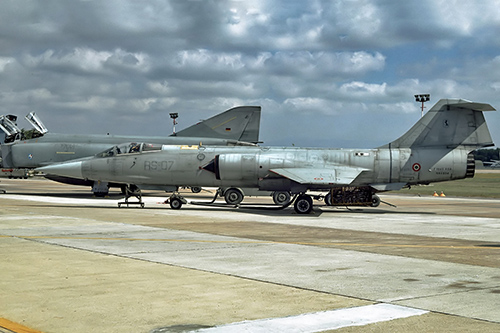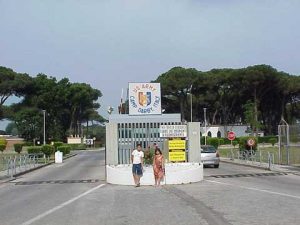|
The Following text is Section 11 of
The 70 Years of NATO: From War to War,
by the Italian Committee No War No NATO
*
Documentation presented at the International Conference on the 70th Anniversary of NATO, Florence, April 7, 2019
In the course of the next two weeks, Global Research will publish the 16 sections of this important document, which will also be available as an E-book.
*
Contents
1. NATO is born from the Bomb
2. In the post-Cold War, NATO is renewed
3. NATO demolishes the Yugoslav state
4. NATO expands eastward to Russia
5. US and NATO attack Afghanistan and Iraq
6. NATO demolishes the Libyan state
7. The US/NATO War to Demolish Syria
8. Israel and the Emirates in NATO
9. The US/NATO orchestration of the coup in Ukraine
10. US/NATO escalation in Europe
11. Italy, the aircraft carrier on the war front
12. US and NATO reject the UN treaty and deploy new nuclear weapons in Europe
13. US and NATO sink the INF Treaty
14. The Western American Empire plays the war card
15. The US/NATO planetary war system
16. Exiting the war system of NATO
***
1. The U.S. Armed Forces have in Italy (according to the official report of the Pentagon Base Structure Report) more than 1,500 buildings, with a total surface area of over 1 million m², and they rent or have been granted permission to use a further 800 buildings, with a surface of approximately 900,000 m². In total, there are over 2,300 buildings with an area of approximately 2 million m² scattered over fifty sites. But this is only part of the U.S. military presence in Italy.
2. The U.S. military bases are joined by the bases of NATO under U.S. command and the Italian bases available to U.S./NATO forces. It is estimated that, in total, there are over 100 bases. The entire network of military bases in Italy is, directly or indirectly, under the command of the Pentagon. It is part of the “area of responsibility” of the United States European Command (EUCOM), the European Command of the United States, headed by a U.S. general, who at the same time holds the office of Supreme Allied Commander in Europe. The “area of responsibility” of the EUCOM, one of the six “unified combat commands” with which the US covers the globe, includes the entire European region and all of Russia (including the Asian side), plus some Western and Central Asian countries: Turkey, Israel, Georgia, Armenia and Azerbaijan.
3. The 31st Fighter Wing is deployed at the Aviano Air Base (Pordenone). The U.S. squadron maintains constant attack readiness with about 50 B61 nuclear bombs (number estimated by the FAS, the Federation of American Scientists, before 2020).

4. On the Ghedi Air Base (Brescia), the 6th Italian Air Force is deployed, ready to attack under U.S. command with about 20 B61 nuclear bombs (number estimated by the FAS before 2020). That Italian pilots are trained in nuclear attack – writes FAS – which is demonstrated by the presence in Ghedi of one of the four units of the U.S. Air Force deployed in European bases (along with units in Germany, Belgium and the Netherlands) “where U.S. nuclear weapons are destined to be launched by aircraft of the host country”. The pilots of the four European countries, along with Turkish pilots, are trained in the use of nuclear bombs in NATO’s annual nuclear war exercise. In 2013, it took place in Aviano and in 2014 in Ghedi.
5. To the U.S.nuclear weapons stationed on Italian territory, the actual number of which is secret, are added those aboard units of the Sixth Fleet, whose main base is in Gaeta in Lazio. The Sixth Fleet depends on the US Naval Forces Command in Europe, whose headquarters is in Naples-Capodichino.
6. The 173rd Airborne Brigade of the U.S. Army is based in Vicenza. It provides rapid intervention forces to the European Command, African Command and Central Command (whose “area of responsibility” includes the Middle East and Central Asia). Forces of the 173rd Brigade, which were employed in Iraq in 2003, are sent on a rotation basis to Afghanistan, the Ukraine and other Eastern European countries.
7. In the Pisa/Livorno area, there is Camp Darby, which has the largest US arsenal in the world outside the U.S. itself. It is the logistics base for the U.S. Army that supplies U.S. and allied land and air forces in Europe, the Middle East and Africa. In its 125 bunkers are projected artillery shells, bombs for airplanes and missiles in a number that can be estimated at over 1.5 million. It cannot be excluded that there have been and may currently be nuclear bombs among the aerial weapons stored at Camp Darby. Together with the artillery ammunition, it is estimated that over 2,500 tanks and other military vehicles are stored at the base along with over 11,000 military materials of various types. The base holds the entire equipment for two armored battalions and two battalions of mechanized infantry, which can be quickly sent to the area of operations through the airport of Pisa(a nationalmilitary air hub) and the Port of Livorno (to which they can also dock nuclear-powered units). Huge ships of private companies that carry arms on behalf of the Pentagon make monthly stops here, connecting U.S. ports to Mediterranean, Middle Eastern and Asian ports.
8. A unit of the Italian Army Special Forces Command (COM.FO.SE) from the Gamerra barracks of Pisa will be transferred in 2019 to an area of Camp Darby that was formerly used for recreational activities and will formally be returned to Italy. This will enable them to better train and be integrated with U.S. Special Forces for secret operations in war zones.
9. As a result of the investigations by the judges Casson and Mastelloni, it emerged that Camp Darby, since the 1960s, played a basic role in the coup network formed by the CIA and the SIFAR for “Operation Gladio”. Camp Darby was one of the U.S./NATO bases that – according to Ferdinando Imposimato, Honorary President of the Supreme Court of Cassation – provided the explosives for the Operation Gladio massacres from Piazza Fontana to Capaci and Via d’Amelio. The U.S./NATO bases were where “black terrorists, NATO officials, mobsters, Italian politicians and Masons met on the eve of attacks”.

10. Camp Darby was also involved in the tragedy of the Moby Prince ferry, which collided with the Agip Abruzzo tanker on the evening of 10 April 1991 in the harbor of Livorno. 140 people died after waiting for hours for help in vain. That evening in the Livorno harbor there was intense traffic of United States military ships engaged in the transfer of U.S. weapons, part of which were secretly sent to Somalia, Croatia and other areas. It included arms that were a par of Operation Gladio. When the collision occured, the manager of the operation – under the US command of Camp Darby – immediately tried to get rid of any evidence.
11. The headquarters of the Allied Joint Force (JFC Naples) is located in Lago Patria (Naples). Its new headquarters, inaugurated in 2012 has a covered area of 85,000 m², surrounded by a large fenced area suitable for future expansion. The staff, on the rise, is composed of over 2,500 military and civilians. NATO’s JFC Naples is under the command of an American admiral, who at the same time commands the US Naval Forces in Europe (on which the Sixth Fleet depends) and the US Naval Forces for Africa.
12. Every two years the JFC Naples assumes the operational command of the “NATO Response Force” (NRF), a “highly flexible and capable” joint force of 40,000 men, which has the task of conducting military operations in the “area of responsibility of the Supreme Allied Commander in Europe and beyond that area”. The spearhead of the NRF is its “Joint Task Force with very high operational readiness”, which is composed of 5,000 men who can be deployed in two to three days in an intervention area “before the crisis begins”.
13. At the headquarters of Lago Patria, since September 2017, the “NATO Strategic Direction Hub for the South”, an intelligence center primarily used for espionage, has been in operation and has been “focused on the southern regions including the Middle East, North Africa and Sahel Sub-Saharan Africa and adjacent areas “.
14. In Sicily, the Naval Air Station (NAS) Sigonella, with a staff of about 7,000 military and civilians, constitutes the largest U.S. and NATO naval and air base in the Mediterranean region. In addition to providing logistical support to the Sixth Fleet, it forms the basis for launching military operations (mostly secret) mainly, but not exclusively, in the Middle East and Africa. The NAS, the official introduction reads, “hosts U.S. and NATO aircraft of all types”, including Global Hawk spy drones, which from Sigonella carry out reconnaissance missions on the Middle East, Africa, eastern Ukraine, Black Sea and other areas. For targeted attacks (almost always secret), Predator drones take off from Sigonella, armed with laser and satellite-guided missiles and bombs.
15. The Naval Air Station Sigonella is supplemented by the Italian base in Augusta, which supplies fuel and ammunition to the U.S. and NATO naval units, and the port of Catania, which can accommodate up to nine warships. For fire drills, U.S. special forces have the Pachino range (Syracuse) granted to them for their exclusive use.
16. The other major US installation in Sicily is the MUOS station in Niscemi (Caltanissetta). The MUOS (Mobile User Objective System) is a very high-frequency military satellite communications system, consisting of four satellites and four earth stations: two in the U.S., in Virginia and in Hawaii, one in Australia and one in Sicily, each with three large parabolic antennas of 18 meters in diameter. This system allows the Pentagon to connect to a single network of command and communications for submarines, warships, fighter-bombers and drones, military vehicles and terrestrial departments while they are in movement wherever in the world they are.
17. In Sardinia, there are the largest polygons for the training of Italian and NATO military forces: in particular those of Salto di Quirra, Capo Teulada, Capo Frasca and Capo San Lorenzo. Here, around 80% of the bombs, missile warheads and bullets used in military maneuvers taking place in Italy are used in fire drills, with serious consequences for the health of the population.
*
Sections 12-16 of the 70 Years of NATO, From War to War, forthcoming on Global Research
This text was translated from the Italian document which was distributed to participants at the April 7 Conference. It does not include sources and references.
Note to readers: please click the share buttons below. Forward this article to your email lists. Crosspost on your blog site, internet forums. etc.
|